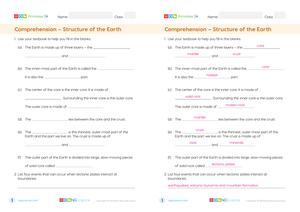Engage students with a captivating introduction to volcanoes by discussing the dramatic imagery of eruptions and the formation of igneous rocks. Use the narrated content in the Learn tab to set the stage for understanding how volcanoes shape the Earth.
Go to the LessonLearning Objectives
- Describe the process of how a volcano erupts and the materials released during an eruption.
- Explain how volcanic eruptions contribute to the formation of igneous rocks.
- Identify how repeated volcanic eruptions can lead to the formation of mountains and islands.
- Differentiate between active, dormant, and extinct volcanoes based on their eruption history.
- Recognize the role of underwater volcanoes in shaping the Earth's surface and forming islands, using Hawaii as an example.
Introduction and Hook
Direct Instruction
Explain the process of volcanic eruptions and the materials released. Highlight the transformation of magma into lava and eventually igneous rock, emphasizing the role of volcanic activity in shaping the Earth's surface.
Differentiate between active, dormant, and extinct volcanoes, using real-world examples such as Mt. Kilimanjaro and the Hawaiian Islands to illustrate these concepts.
Guided Exploration
Watch the 'Volcanic Eruptions' video to visualize the eruption process and understand the formation of volcanic rock. This video provides clear explanations and visual aids, making complex processes accessible to students.
Discuss the role of underwater volcanoes in shaping the Earth's surface, using Hawaii as a case study to illustrate how volcanic activity can form islands.
Hands-On Activity
Conduct a hands-on activity where students create a model volcano using baking soda and vinegar to simulate an eruption. This activity helps students visualize the eruption process and understand the materials released.
Independent Practice
Assign students to research a specific volcano and present their findings on its eruption history, type, and impact on the surrounding environment.
Check for Understanding
Review and Reflection
Facilitate a class discussion on how volcanic eruptions contribute to the formation of mountains and islands. Encourage students to reflect on the long-term impact of volcanic activity on the Earth's surface.
Assessment and Extension
Administer the 'Comprehension – Structure of the Earth' assessment to test students' understanding of geological structures and processes. This activity encourages research and comprehension skills.
Try the Quiz


